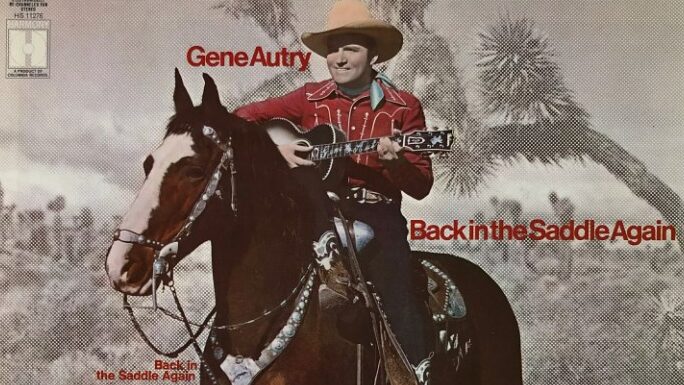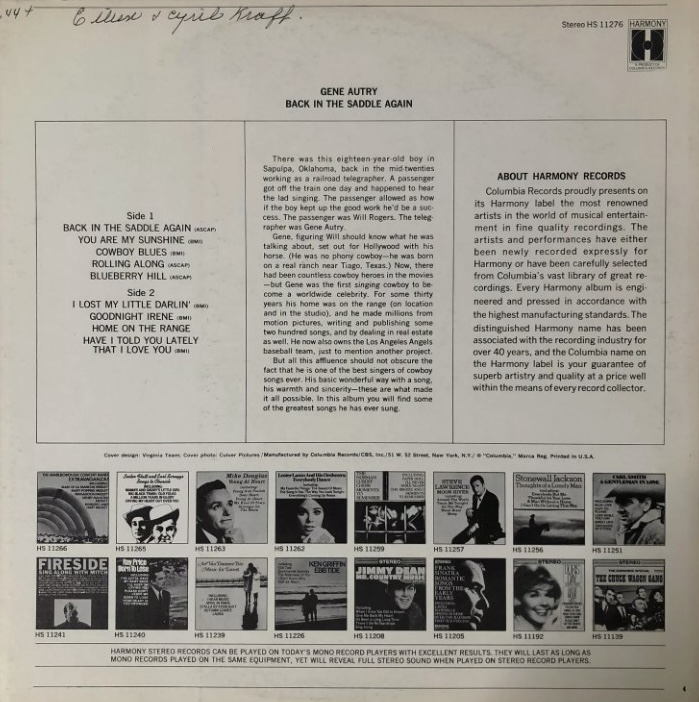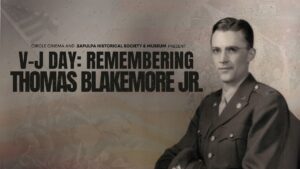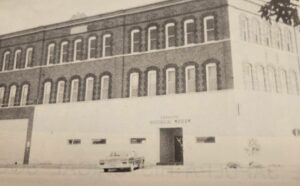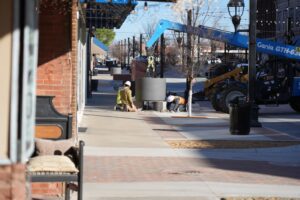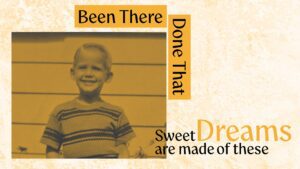Rachel Whitney, Curator, Sapulpa Historical Museum
“Radio has played an important role in Oklahoma’s communication history. The first voice that came over Oklahoma’s airwaves was probably broadcast from the military radio base at Post Field in Lawton shortly after World War I.
“By spring 1921 they were regularly broadcasting market reports, weather, music, and news. Funding for their operation came from the sales of receiver sets rather than from advertising. In January 1922 there were thirty receiver sets in Oklahoma City. By the spring of that year the federal government had assigned the call letters WKY to the young station.”
In the 1930s, one of our town’s pop-culture connections was Bob Wills and his band. The band began their journey in Texas before coming to Oklahoma. The group had a short stay in Oklahoma City, where Bob Wills played for WKY. At this station, this is where the band earned their name, Texas Playboys.
Then the band moved to Tulsa.
But before Bob Wills came to Oklahoma, Will Rogers and Gene Autry were the rising stars in Oklahoma. Autry may have started his career in our town. There were many stories of where he began his stardom. The story always began with: Gene Autry was working at a train station depot as a telegram operator and luggage boy. One day, Will Rogers stepped off the train and heard a station worker singing. He told the young man that he should go to Hollywood. That year, Autry moved to New York, then headed to Hollywood. The story goes this happened in Chelsea, Oklahoma. Others say it was Bristow or another small town. And some may say it happened in Sapulpa’s depot.
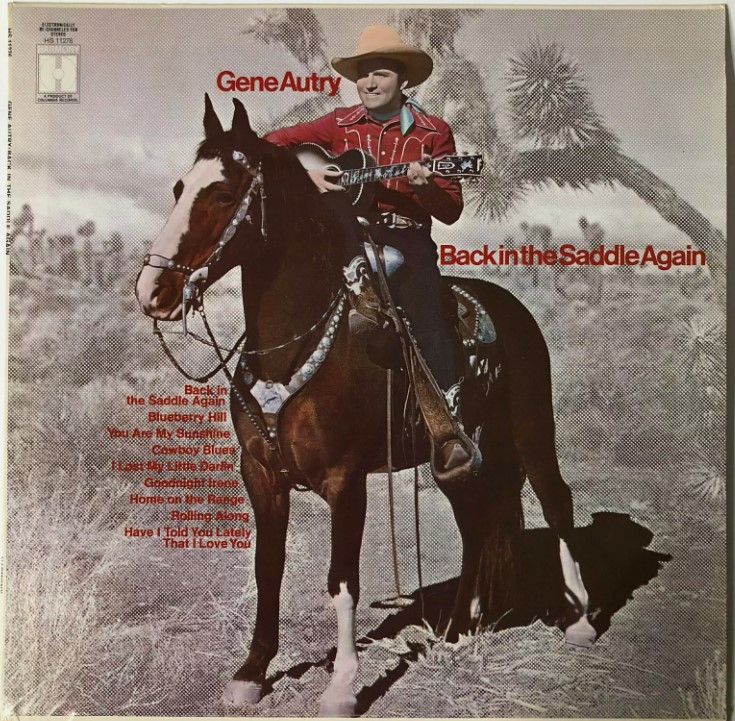
But before moving to New York, Gene Autry played his tunes at the Tulsa radio station, KVOO, in 1928.
But before Autry, and before KVOO, there was Jimmie Wilson and the KFRU of Bristow.
“KFRU went on the air in January 1925 from studios in Bristow. Owned by oil millionaire E. H. Rollestone, the station thrived by broadcasting live, local talent. Crowds gathered to watch through the studio’s numerous windows.”
Among the first bands to play on the Bristow KFRU radio was Sapulpa’s own Jimmie Wilson and the Catfish String Band.
“In 1926 the call letters KVOO were assigned to the station as it improved its plant and added studios in Tulsa.”
The AM radio station KVOO was dubbed the “voice of Oklahoma.”
The 1920s radio stations in Oklahoma took off like a rocket, especially at schools.
“Campus radio stations were popular from the beginning of broadcasting. In early 1922, 5ZG went on the air in the basement at the house of a University of Oklahoma (OU) electrical engineering student. By fall of that year 5ZG became WNAD and on October 4 broadcast an OU football game for the first time. In May 1923 OU became the licensee, and the station became a part of the engineering lab. The Oklahoma College for Women (now University of Science and Arts of Oklahoma) at Chickasha purchased station KFGD in 1924 to broadcast educational programs. J. T. Griffin bought the station in October 1931, moved it to Tulsa, and changed its call letters to KTUL. Oklahoma A&M College (now Oklahoma State University, OSU) sent programs out over KVOO in an arrangement with that station until FM (frequency modulation) radio emerged.”
“By May 1922 the Midland Refining Company, organized by William G. Skelly, was broadcasting entertainment on its station, WEH, in the Tulsa area. In January 1924 a second Oklahoma City station, KFJF, went on the air.”
Skelly had WEH, but he had his eye on another station near Tulsa. He heard the newly renamed KVOO was having financial difficulties in Bristow.
This week in Sapulpa—well, at least in Creek County history—on September 10, 1927, it was announced that Tulsa was preparing to fund the KVOO station and move it to Tulsa.
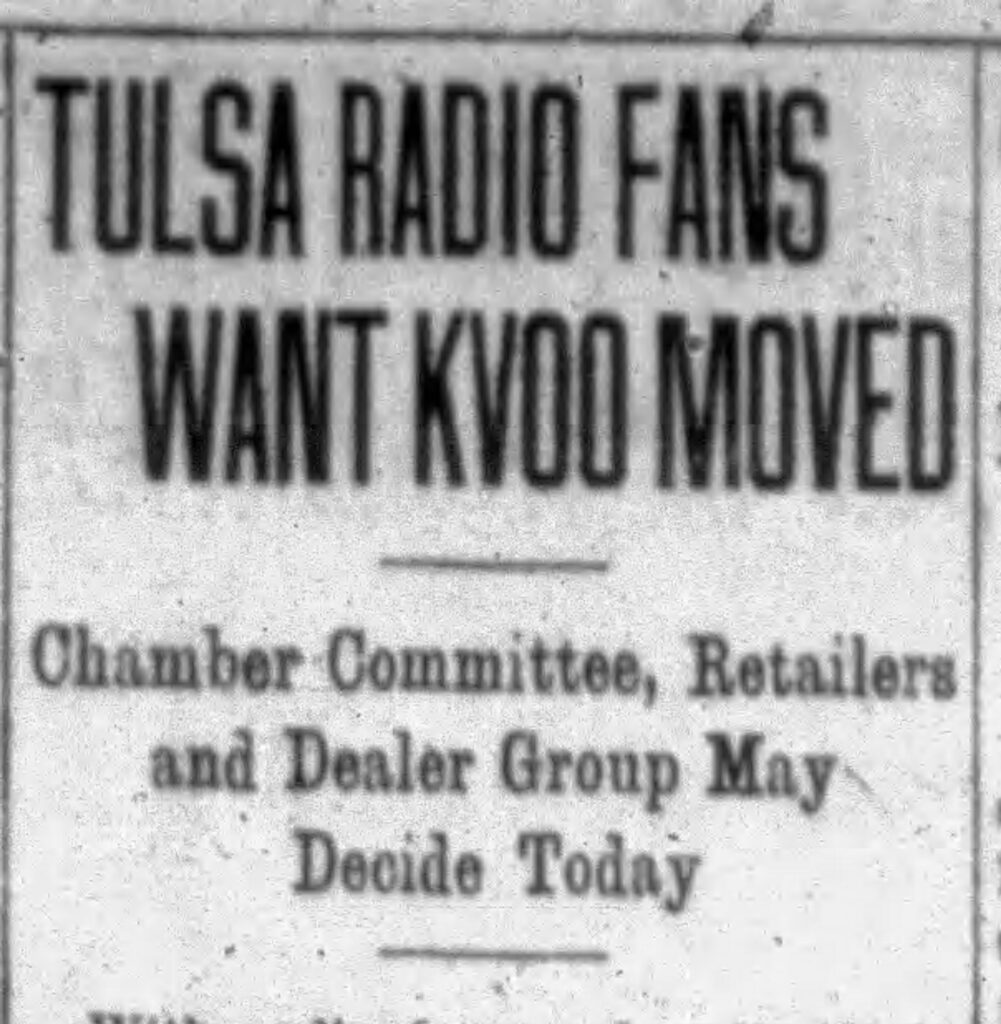
“Station KVOO, the ‘Voice of Oklahoma,’ will move to Tulsa – as soon as $15,000 has been pledged by Tulsa business interests actual work on the establishment of a radio station in Tulsa will start.”
Tulsa’s Chamber of Commerce was working on a campaign to obtain the $15,000*.
*Note: $15,000 in 1927 is nearly $260,000 today.
In exactly 7 days, the radio station in Bristow where we first heard Sapulpa’s Catfish String Band play moved to Tulsa where famous artists like Gene Autry and Texas Playboys, and many others would play.
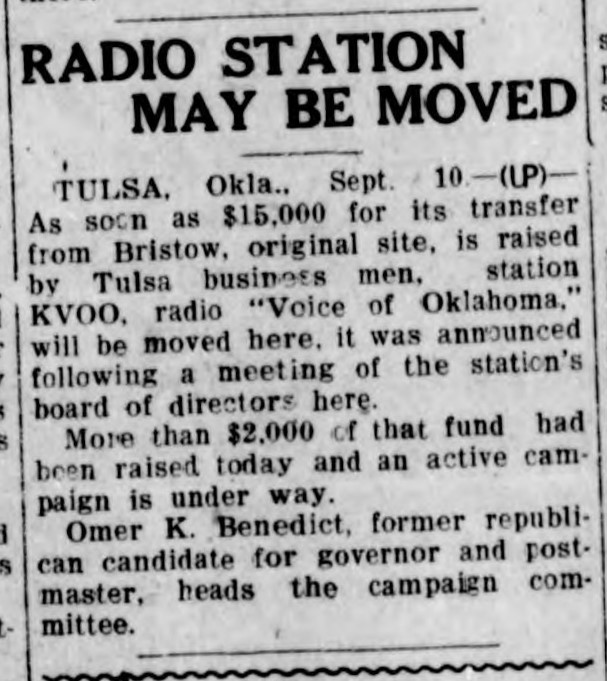
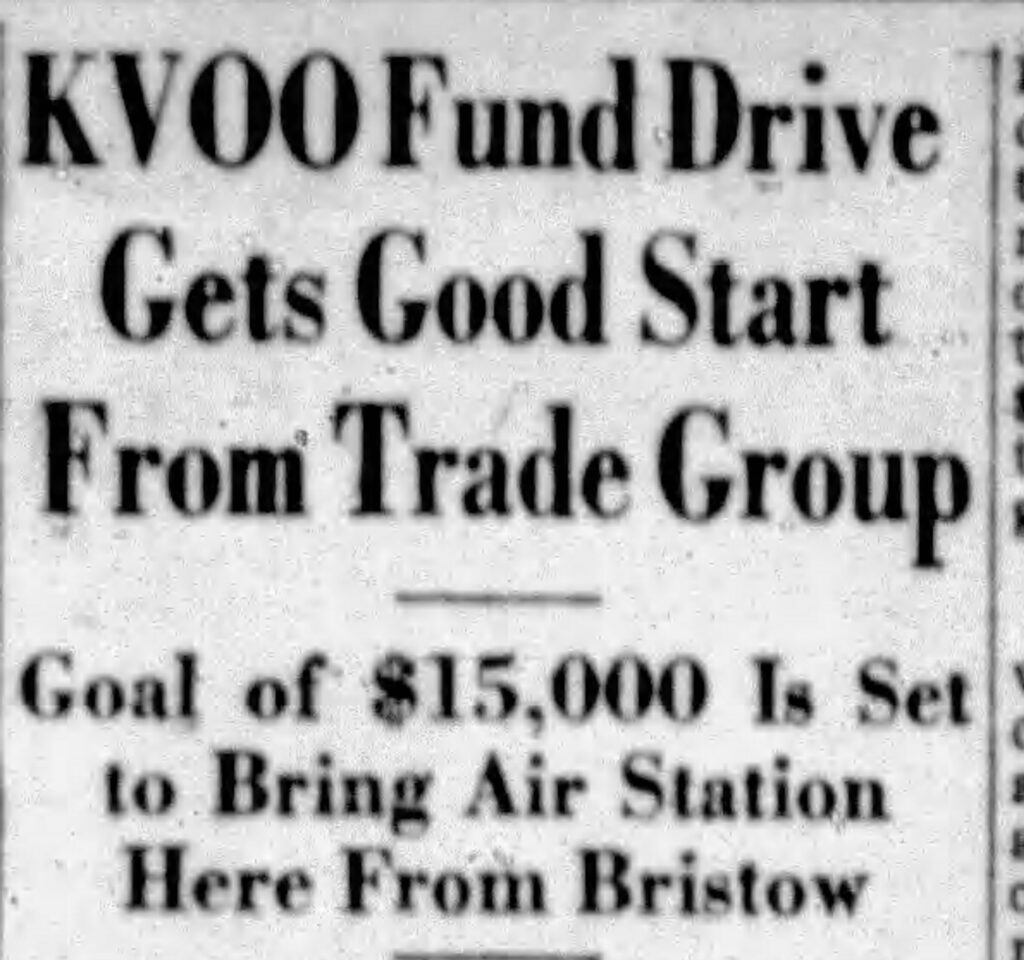
“This was assured when Alf G. Heggem, president of the Tulsa Chamber of Commerce, announced that sufficient funds had been pledge by Tulsa business and professional me to finance the establishment of the big radio station here. Transfer of the radio plant from Bristow to Tulsa will start immediately.”
The KVOO’s new home was ready.
“Skelly bought a 5,000-watt transmitter and built studios in the Wright Building in downtown Tulsa. In the 1930s KVOO’s thirteen-member staff orchestra and thirty different musical groups performed live each week. Transmitter power was increased to 25,000 watts in 1938 and to 50,000 watts in 1943. During its early days the facility emphasized live programming and broadcasted from several different remote locations, such as Tulsa’s Mayo Hotel. Nationally recognized news commentator Paul Harvey and actor Tony Randall got their start at KVOO. Orvon Gene Autry performed on KVOO in the late 1920s, and Bob Wills and the Texas Playboys made Texas swing (later Western swing) music popular on this Oklahoma radio station in the 1930s.

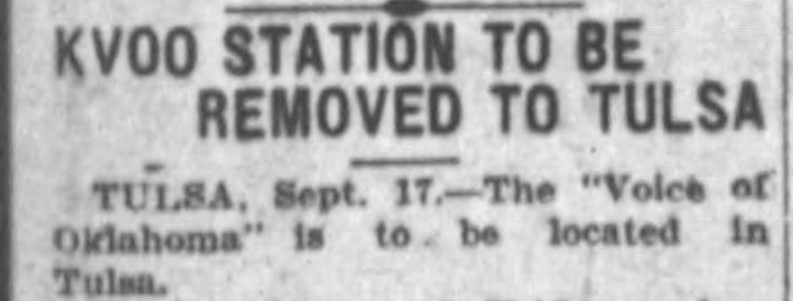
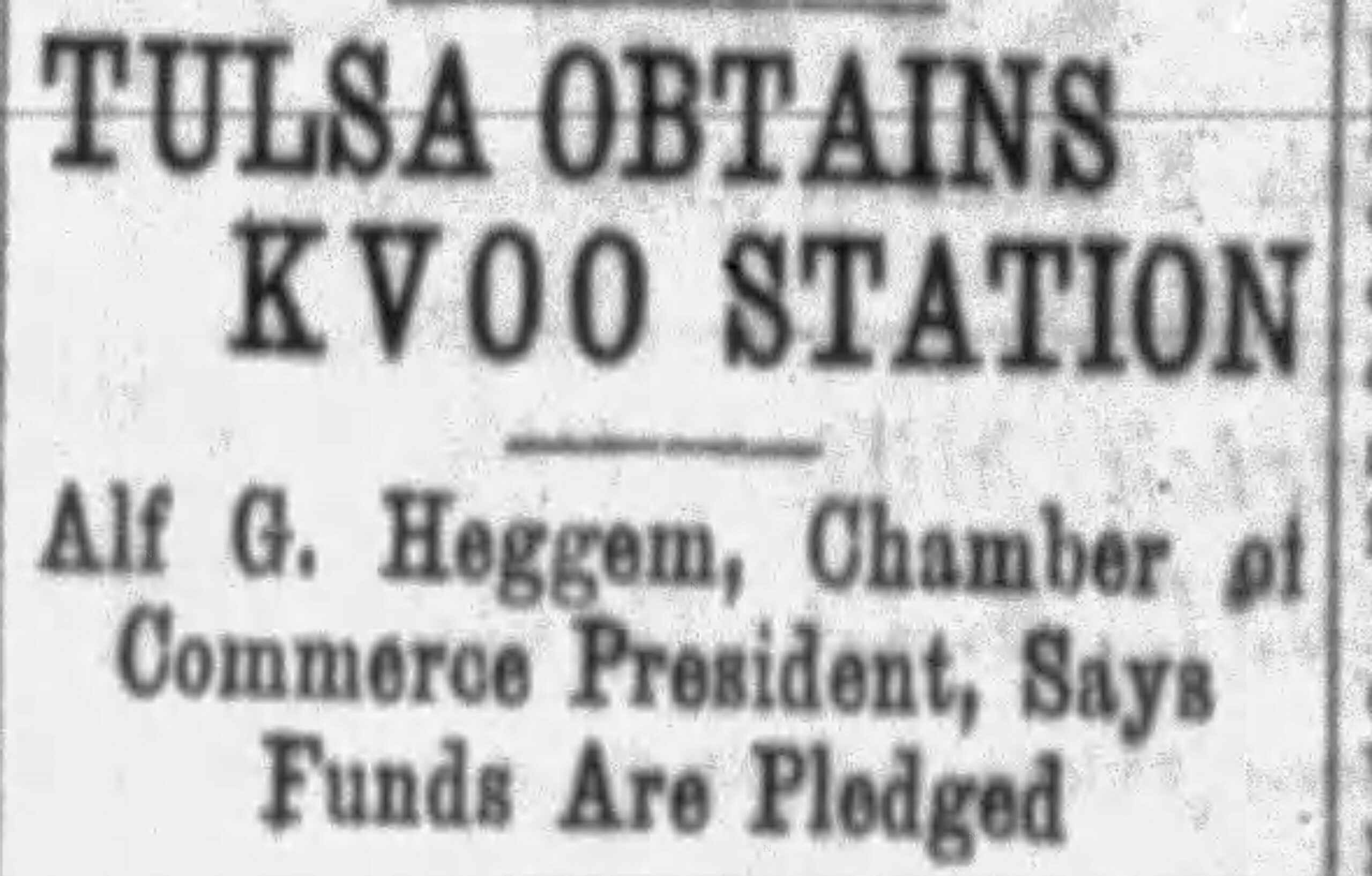
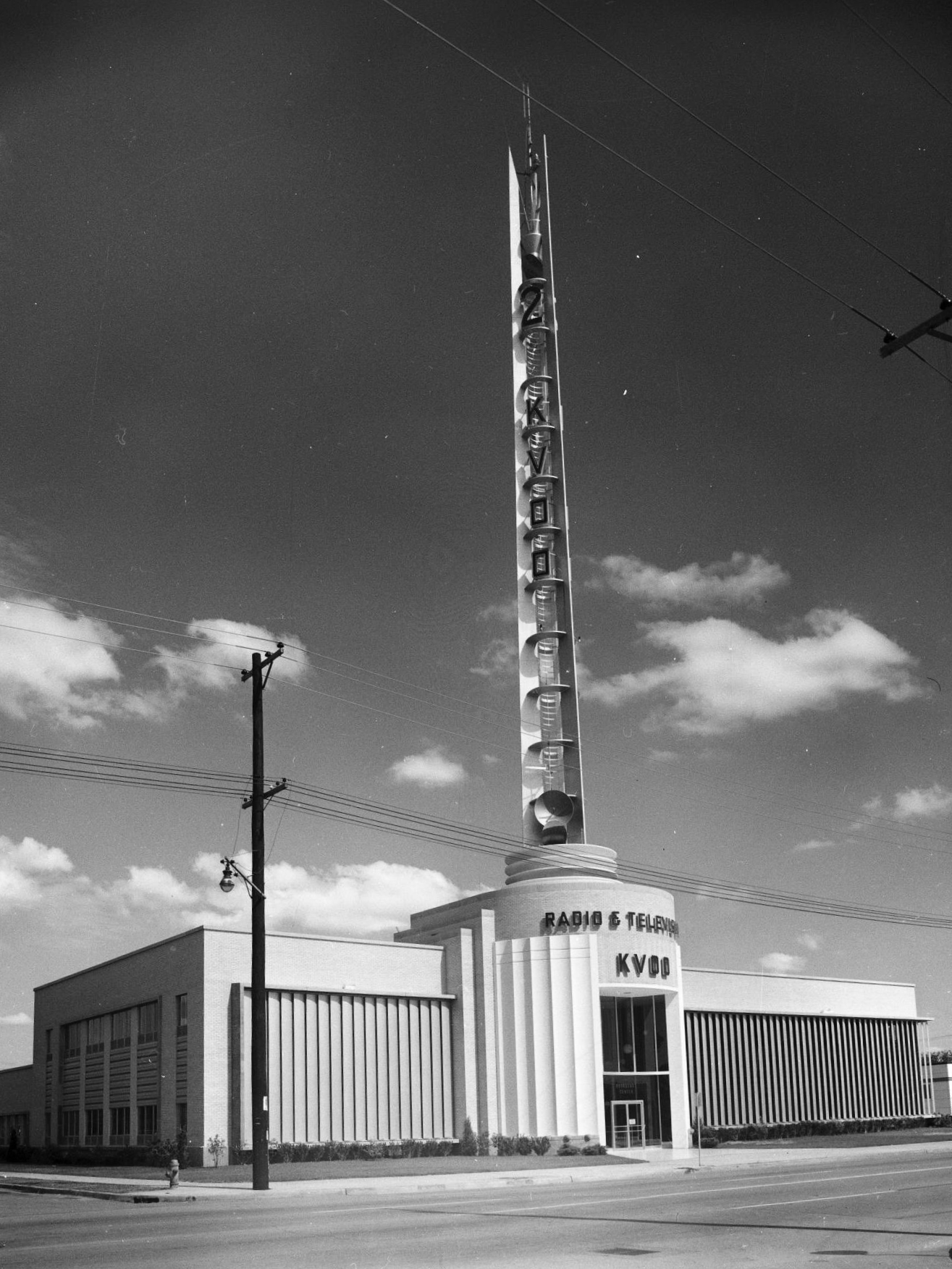
When television emerged on the scene, Skelly applied for a license. He joined forces with Robert S. Kerr, and KVOO-TV Channel 2 was born in 1954. This partnership developed only after both parties agreed that Harold C. Stuart, Skelly’s son-in-law, would manage the station. Television became a threat to radio as audiences were drawn away from the radio story programs. Like many radio stations, KVOO offered an all-music format and became a leader in the ratings when it switched to a country music format. KVOO-TV was sold in December 1970 and took on the new call letters of KTEW.”
Oklahoma’s radio system had made history.
(Sapulpa Herald, September 10, 1927; Tulsa World, September 9, 1927, September 17, 1927; Tulsa Tribune, September 10, 1927; Enid Events, September 15, 1927; Oklahoma City Times, September 17, 1927; Oklahoma Historical Society)

